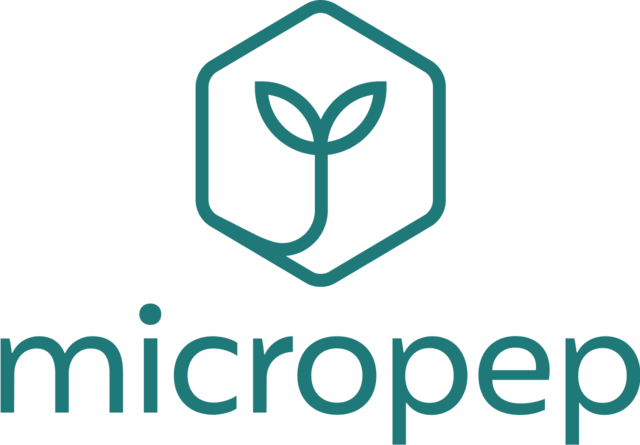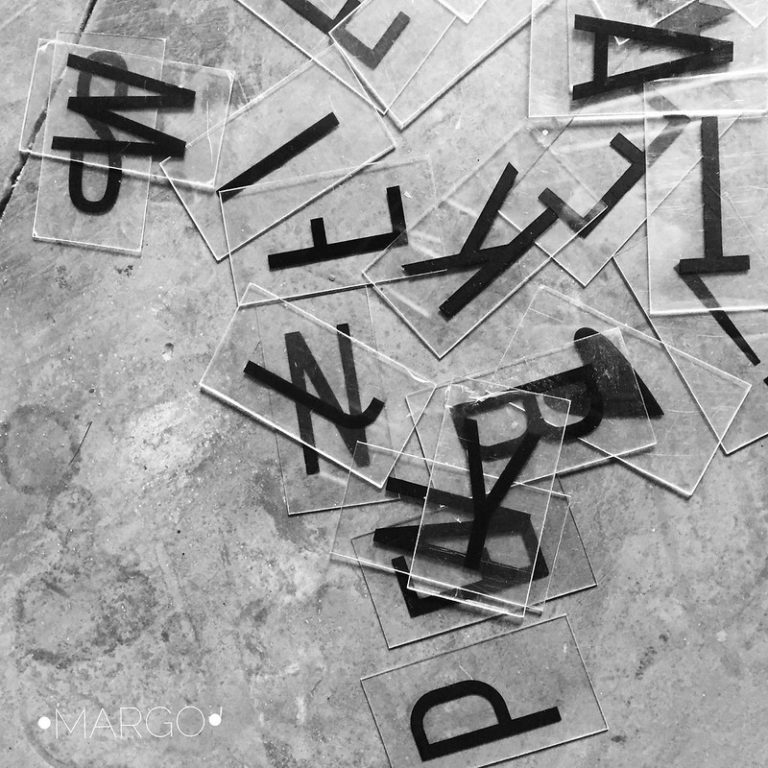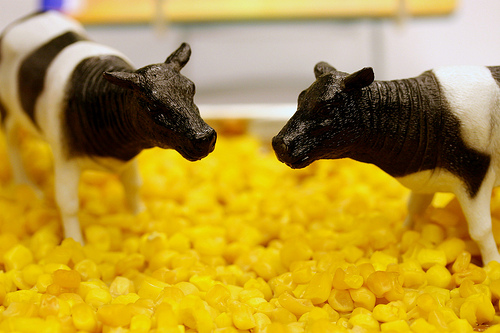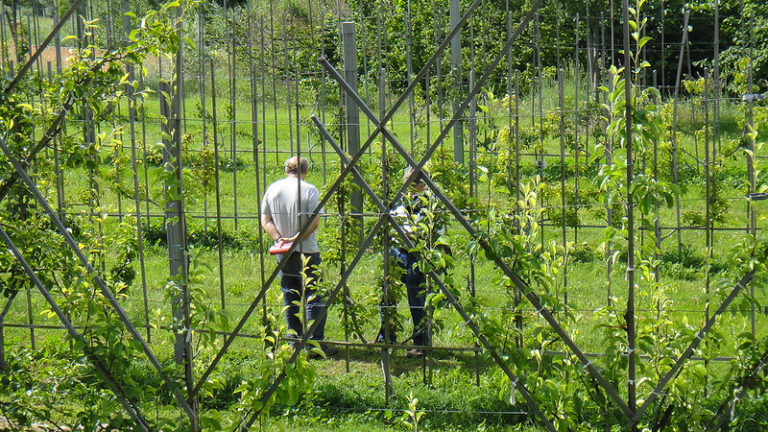Actualités
GMO directive : the origins of the mutagenesis exemption

In his opinion on the « Mutagenesis » case [1], the Court of justice Advocate general considered there is no link between the mutagenesis exemption and the recital which states that the directive should not apply to organisms obtained through certain techniques of genetic modification which have conventionally been used in a number of applications and have a long safety record. However, the study of the preparatory work shows the mutagenesis exemption appeared at the same time as the recital in question…
The European Union GMO legislation does not apply to all organisms obtained through genetic modification. Since the first European GMO directive, genetically modified organisms obtained through mutagenesis are exempted, under certain conditions, from the obligations laid down in the directive. As a consequence, these GMOs can, under certain conditions, be cultivated without having been subject to an environmental risk assessment and they can be marketed without traceability or labelling.
But why was this exemption made ? To find this out, Inf’OGM dissected the preparatory work of the first GMO directive, directive 90/220. The study of the preparatory work shows that, from the beginning, a special treatment for organisms obtained through mutagenesis is considered on the basis of the apparent safe use history of this technique. It also shows that the mutagenesis exemption was inserted at the same time as the recital which states that the “directive should not apply to organisms obtained through certain techniques of genetic modification which have conventionally been used in a number of applications and have a long safety record” [2]. This suggests that there is a link between the exemption and the recital. And that the question of the rationale of the exemption finds its answer in this recital.
Why go back to the context of the 90s and the preparation of this directive ? Simply because the question of the rationale of the mutagenesis exemption is currently at the heart of the case concerning the legal status of products obtained through new techniques of genetic modification, and more specifically through mutagenesis [3]. At the present time, part of the industry claims that these new techniques are mutagenesis techniques so as to make the GMOs obtained through them benefit from the exemption – in other words, so as to market these GMOs without them being subject to the cumbersome authorization and risk assessment procedure for GMOs.
The French organisations who are party to the legal proceeding claim that mutagenesis techniques developed after directive 2001/18 was adopted (which replaces directive 90/220) cannot be covered by the exemption. To support this claim, they cite recital 17 of directive 2001/18 which states that the directive “should not apply to organisms obtained through certain techniques of genetic modification which have conventionally been used in a number of applications and have a long safety record”. However, in his opinion issued in January 2018, the Court of justice Advocate general rejected this claim. According to him, there is no link between the mutagenesis exemption and recital 17 [4]. The Court is expected to give final judgment in June 2018.
From the exclusion of the GMO definition…
The story begins in 1988. That year, the European Commission proposes a directive setting up a framework for the deliberate release of GMOs into the environment. This will become directive 90/220, later on repealed and replaced by directive 2001/18.
The text proposed by the European Commission in 1988 already includes the idea that it should not apply to techniques which have a safety record. Indeed, recital 7 states that “new techniques of genetic modification are defined in Article 2 (2) and Annex I of this Directive; whereas those techniques which have conventionally been used with crop plants and livestock with an excellent safety record are not covered by the definition of Article 2 (2) or Annex I” [5]. But the text proposed by the European Commission does not contain a list of techniques which are considered as not leading to GMOs. And the term “mutagenesis” is not mentioned in the text either.
One has to wait until the end of 1988 and the opinion of the European Economic and Social Committee to find the first occurrence of the term “mutagenesis” in the preparatory work [6]. In its opinion on the text proposed by the European Commission, the Economic and Social Committee explains that the definition of “genetically modified organism” is not specific enough [7].
According to the Economic and Social Committee, “in classical genetic research, genetic modification plays an important role and has been tested over decades if not centuries. Organisms which have been modified in this way must be clearly excluded from the Directive.”. As a consequence, the Committee proposes to exclude “organisms produced by processes such as […] mutagenesis […]” from the GMO definition [8].
In its opinion on first reading on the European Commission directive proposal, the European Parliament Committee on Industry, Research and Energy proposes an amendment which takes over the wording of the opinion of the Economic and Social Committee.
Both the Economic and Social Committee’s opinion and the Parliamentary amendment propose to exclude organisms obtained through mutagenesis from the GMO definition : those organisms are not considered as GMOs. However, the justification given is interesting as it might help understand why the mutagenesis exemption was later made in the directive. It is indeed the history and seemingly risk-free use that justifies, in their opinion, a differentiated treatment of organisms obtained through mutagenesis. The Economic and Social Committee and the Committee on Industry, Research and Energy clearly intent to establish this differentiated treatment in the context of recital 7 by using a wording that echoes the recital (“genetic modification […] tested over decades if not centuries” echoing “techniques which have conventionally been used with crop plants and livestock”).
But the amended proposal submitted by the European Commission after the Economic and Social Committee and the European Parliament’s opinion on 1st reading does not mention at any time the term “mutagenesis”. Thus, it does not exclude organisms obtained through mutagenesis from the GMO definition [9]. However, the amended proposal continues to include recital 7 and adds a list of techniques which are not considered as resulting in a genetic modification – mutagenesis does not appear in this list [10].
… to the exemption
However, the term “mutagenesis” reappears in the Council common position on the amended directive proposal. And this common position holds a surprise…
As did the Economic and Social Committee and the European Parliament Committee on Industry, Research and Energy, the Council proposes to apply a differentiated treatment to mutagenesis. But with a considerable difference: the Council does not exclude organisms obtained through mutagenesis from the GMO definition. Rather, it defines mutagenesis as a technique of genetic modification.
Above all, at the same time it defines mutagenesis as a technique of genetic modification, the Council proposes two other changes to the text. First, it suggests to include a recital which states that the directive “should not apply to organisms obtained through certain techniques of genetic modification which have conventionally been used in a number of applications and have a long safety record”. And then it suggests to include an article 3 according to which the directive does not apply to organisms obtained through the techniques of genetic modification listed in Annex IB. Mutagenesis is on this list.
The modifications suggested by the Council are in the directive that was finally adopted on April 23rd 1990 [11] and are included in directive 2001/18, which replaces the directive adopted in 1990.
Unfortunately, the Council’s motivation accompanying its common position does not contain any explanation as to why the Council suggested these changes. The Council does not explain why it proposed to make an exemption for mutagenesis. But is exempting organisms obtained through mutagenesis from the obligations laid down in the directive while at the same time stating that the directive should not apply to organisms “obtained through certain techniques of genetic modification which have conventionally been used in a number of applications and have a long safety record” not the beginning of an explanation?
The question of the rationale of the mutagenesis exemption could thus find its answer in the fact that it is a technique that has “conventionally been used in a number of applications and have a long safety record”. However, the exemption might also be explained by more pragmatic reasons, which have nothing to do with the so-called safety of the technique: when directive 90/220 was adopted, mutated plants were already crossed with numerous other plants and it was impossible to find the initial genomes.
A situation that French civil society organizations do not want to see happen again. For the moment, however, the European Commission does not fund any research project to develop protocols for the detection and identification of new GMOs that would make it possible to differentiate them from mutations and epimutations that may appear spontaneously in nature… [12]
The speed of artificial genetic changes in species, however, will never be comparable to that of natural mutations. This creates uncertainty regarding the impact of modern biotechnologies on the evolution of biodiversity and ecosystems. And if products obtained through mutagenesis and new techniques of genetic modification are not subject to traceability and labelling requirements, consumers will continue to ignore what they eat – whether or not they are opposed to eating such products.
A conditional exemption
From the start, the mutagenesis exemption is conditional. According to directive 90/220, organisms obtained through mutagenesis are exempted from the risk assessment and labelling obligations (among other obligations) on the condition that the mutagenesis technique does “not involve the use of GMOs as recipient or parental organisms”.
Directive 2001/18 added another condition. The mutagenesis technique must “not involve the use of recombinant nucleic acid molecules”. It is the development of new techniques which have not been traditionally used for various applications and which do not have a safety record, such as site-directed mutagenesis, that motivated this addition. Site-directed mutagenesis, already known in 2001, had led the European legislator to add this condition concerning “the use of recombinant nucleic acid molecules” in directive 98/81/CE on the contained use of genetically modified micro-organisms.
[2] Council Directive 90/220/EEC of 23 April 1990 on the deliberate release into the environment of genetically modified organisms.
[3] .
[4] .
[5] Proposal for a Council Directive on the deliberate release to the environment of genetically modified organisms. http://eur-lex.europa.eu/legal-content/EN/TXT/PDF/?uri=CELEX:51988PC0160(02)&from=EN
[6] Economic and Social Committee, Opinion on the proposal for a Council Directive on the deliberate release to the environment of genetically modified organisms, Official Journal of the European Communities, C/23/45, January 30th 1989. http://eur-lex.europa.eu/legal-content/EN/TXT/PDF/?uri=OJ:JOC_1989_023_R_0045_01&from=EN
[7] The definition was the following : “an organism in which the genetic material is altered in a way that passes the natural barriers of mating and recombination. Annex I indicates the techniques by which such genetic alterations can be obtained”.
[8] It is interesting to note that the Economic and Social Committee also proposes to pose certain limits to the exclusion of mutagenesis from the GMO definition. In particular, it proposes two conditions which will later be included in the directive to limit the mutagenesis exemption : the technique must not not involve the use of recombinant DNA techniques or genetically organisms.
[9] European Commission, Modified proposal for a Council directive on the deliberate release into the environment of genetically modified organisms, Official Journal of the European Communities, C246/5, September 27th 1989. http://eur-lex.europa.eu/legal-content/EN/TXT/PDF/?uri=CELEX:51989PC0408&from=EN
[10] The techniques in this list are in vitro fertilization, conjugation, transduction, transformation or any other natural process, and polyploidy induction.
[11] Council Directive 90/220/EEC of 23 April 1990 on the deliberate release into the environment of genetically modified organisms. Official Journal of the European Communities, L117/15, May 8 1990. http://eur-lex.europa.eu/legal-content/EN/TXT/PDF/?uri=CELEX:31990L0220&from=EN
[12] .















